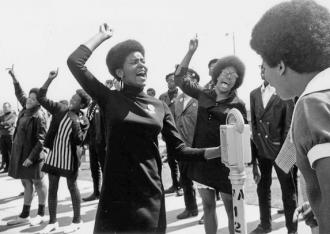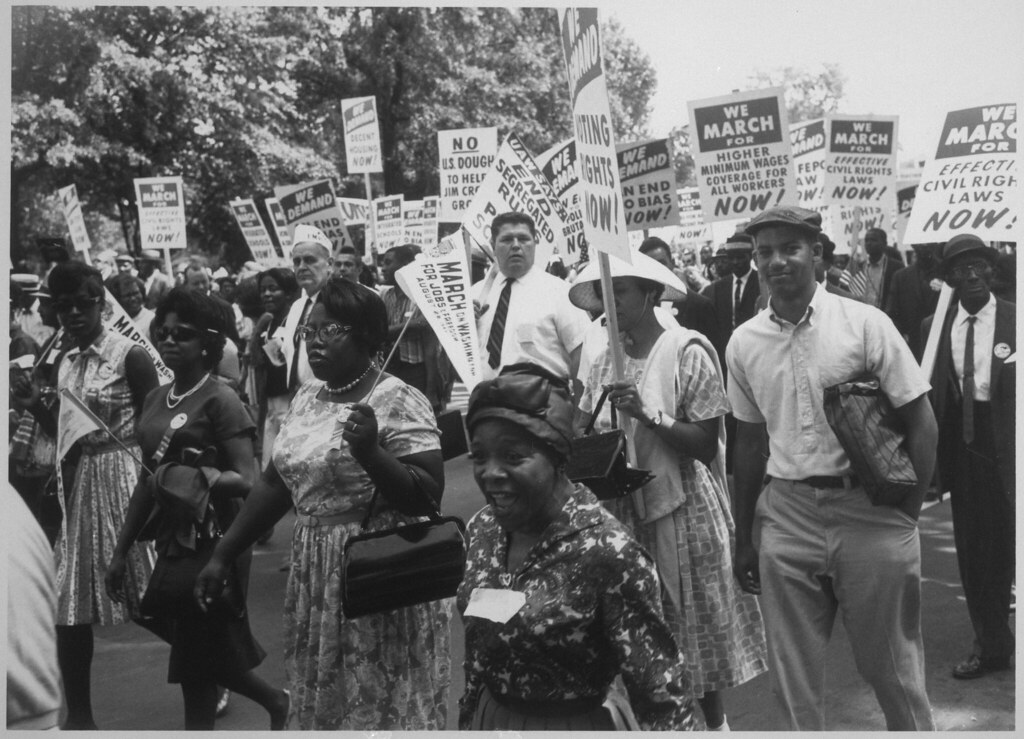Black People’s Struggles in the USA 1960; Heard of Colorism, Racism, and casteism? Do you think these were nineteen-sixties colonial issues? Apparently yeah. But if you really think so, Well, then you must be mistaken. Colour discrimination is not a sixties mindset. The sixties was the decade when black people struggled to point this out and voice their opinion on this racial discrimination on skin and color because they could no more withstand it.

Where the world is going forward to the greatest advancement, why not is there progress in human minds, their thoughts, intellect, and how they interact with each other? Have we lacked somewhere that is progressing in humanities?
You think the color discrimination has ended, and no one does look down upon others for being dark. People with light skin are just as Indiscriminatory to everyone. Ain’t nobody judges anyone. Just like time, racism had been revolutionized. It has a deep seep through our mind that it’s now us who loathes ourselves to be dark.
Colorism in Progressive Era
The world has grown from hating others to hating ourselves. The cacophony is unprecedented. The harmony we sought for our world outside, we have lost within. People would be good enough to be nice to others without any discrimination because that’s what civilized society teaches us.
:max_bytes(150000):strip_icc():format(webp)/booker-t--washington-giving-a-speech-640479571-184c0fbe012f49e88d30afa525db7e0f.jpg)
African Americans in the Progressive Era
But when it comes to criticizing ourselves, there is no check on that. Thousands of people live an undermining self-perception in all stages of their life because they think they are not enough. It has a protracted history that we are going to dive into in this blog. Black people’s struggles have been going on for ages and continue till now.
The Journey of Self-love Within Rampantly Prevailing Colorism
Deep beneath the uncompressing critic inside you, there is a pure soul that loves you because no human is born with hate within, it the environment we grow up in shapes our perception of how we look at the world and ourselves.
Several studies have been conducted on the mental health of black communities and how blatant discrimination affected their social standing, quality of life, and personal well-being. Let’s Revisit black people’s struggles back in the 1960s and understand how it propels into whatever world we see around us today.
Addressing Black People’s Struggles Through Time
The era of the 1960’s has been the most memorable watershed for various colonial deformative beliefs and customs. People began to find new ways to choose for revolution in many aspects of life. If we talk about black people’s struggle, it also originated in the 1960s with roaring sensation, although many tried to crush it.
Despite that, it created an unavoidable existential identity for the black community. The social issues that were resolved in the sixties decade continue to influence the new millennials’ political and social norms in a well-constructed society.
You may have found a world where no one disparages you over your skin color, hair, body, or any other thing that differentiates you from the rest of the people. It’s because of the struggle of the black community that took on every challenge and disregarded every obstacle to make the world a more livable place for the black community.
Imitating the same practice, victimized races from several parts of the world started the movement of accepting differences around the world.
Black People Struggle for Civil Rights
History remembers the great depression as the start of various societal evils as it put an end to various great societies. American society is too vulnerable to the impacts of the great recession in 1960, and the prolonged period of war has exhausted itself internally.
The open discrimination toward African Americans, who were apparently second-class citizens, was deprived of various rights that other citizens have. The post-war era made space for open discrimination against black to the extent that many black people lost their lives enduring hostile treatment by racist people in many parts of the country.
Black men used several strategies to mark their resistance and voice out their will for equal rights despite being vehemently targeted by deep-rooted systemic racism. Black Americans opt for civil disobedience, peaceful marches, protest, and boycotts nationwide. Their Freedom rallies throughout the country caught much attention in America and neighboring states where people were facing discrimination.
The positive aspect of the whole effort was that national television supported and aired their protest to create awareness to end racial discrimination. Following that, as a sign of resistance to racial discrimination, the black community and the white Americans who supported them in seeking justice began a whole new civil right movement in the country.
Freedom Struggle & Equal Employment Rights
Black slavery has long been demolished in America’s social system, but its remnant still exists in the form of racism against black skin, ethnicity, and kin. The racism that restrains black people to only lower-level jobs that other citizens don’t find fit for themselves is another disguised form of slavery.

Employment disparity is one of the many struggles that the black community in the united states of America faced during the 1960s. Equal employment rights were one of the changes the black civil rights movement worked for.
They needed equal treatment at the workplace and equal opportunity in the Job market. The racism deep set in the system was exploiting and disheartening the spirit of the black community who, even after being capable, were unable to secure a job that white men got without any effort by simply being a superior race in the state.
To prevent racial discrimination in employment, education, sport, and other necessary aspects of life, the government of the united states of America presented the civil rights act of 1964.
Black People Struggles for Political Rights
The black civil rights movement in 1954-1968 also took the shape of a political movement, where the state’s unfair and biased legislatures underwent reforms. The civil right movement did not just become the black freedom movement but one that campaign that addressed every dishonorable act of discrimination in any aspect of life that society had made normal.
People in large numbers protested institution reforms to demolish racial segregation and discrimination. In the United States of America, black communities were treated as the second citizen to the extent that they did not have voting right until the Voting Rights Act of 1965 passed. It gave black people an equal right to vote for a political leader, just as any other white citizen.
Black People’s Struggle to Create Equity in Education
A long series of acts of civil disobedience and nonviolent protest by blacks and whites people eventually drew the attention of institutions to the severity of the issue. Now federal law took the responsibility to protect all Americans’ civil rights, regardless of color, skin, ethnicity, or race.

A whole new grinding process was waiting for black kids in the education sector. Equal education for blacks and whites was a dream of many middle-class black Americans. The discrimination laid its extensive roots in the education systems. High schools that fall under the government in black communities were entirely neglected.
On the other hand, due to the low socio-economic status of black workers, they couldn’t afford to gain quality education which only financially sound families could afford.
One of the reasons why black students were unable to secure a good job was also education. There was a massive difference in their skills compared to white students. The black education students received had no quality because of their schools.
On top of it, capitalism’s mechanism devastates young black men when they find themselves in the job market and realize that better education brings a better job. And a better education comes with better money. So whenever black people struggled to make a better living in the rigid socio-economic structure, they found themselves squeezed back to a single place with no progress.
Thurgood Marshall, an American civil rights lawyer, once asked to express his opinion of ongoing racism against Black African Americans. Here is what he replied;
“I wish I could say that racism and prejudice were only distant memories, but as I look around, I see that even educated whites and African Americans…have lost hope in equality,”
The Final Takeaways
If we talk about black people’s struggles in the 1960s, there would be no end. It’s still continuing. With the relentless effort of black activists, you would find a number of things that may have altered with time. However, simultaneously there are whole new things that need to be addressed. It’s 2022; we have come forward six or seven decades and still need to create the free world our ancestors were looking for.
If you want to know more about black people’s struggles in the 1960s and how young black men and women broke the glass ceiling to make a memorable place for them in society, you need to hear the story of Yvonne Barnes. The author, R, Ray Barnes, shares an inspiring story with you. His newly released book Queen Pin features the struggle of a black sportswoman who dismantled all forms of discrimination and pursued her career in national bowling.

